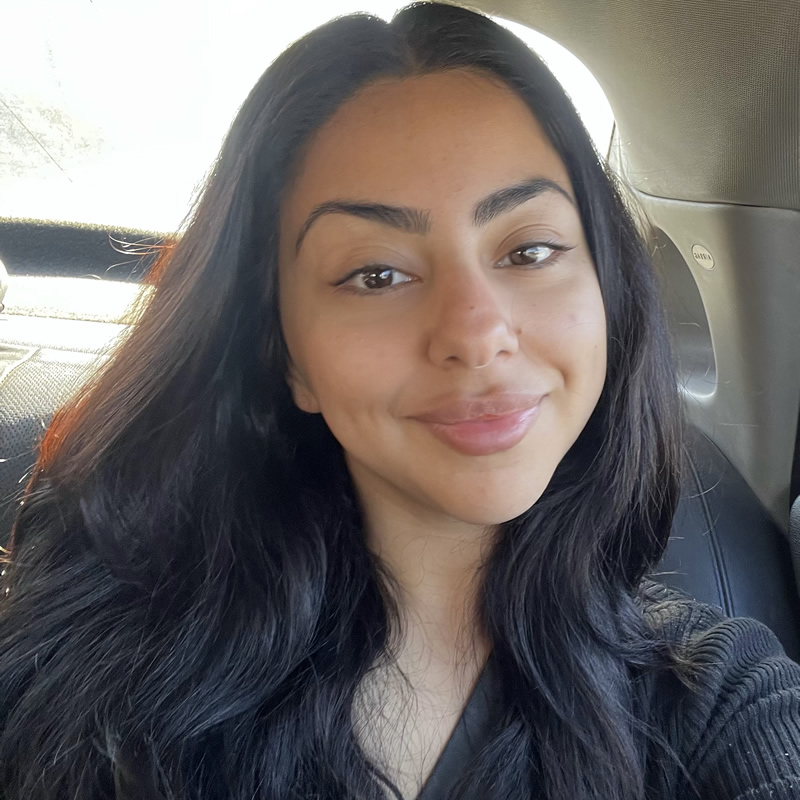Control Over Desire - Alexis A.


Description:
Gigi Fong, a former sex worker, boudoir artist, and podcaster is an expert in everything sex-positive, including alternative dating and sexual satisfaction for lovers of all identities. This artwork was created to represent sex and soul ties, and how this comes into play for sexual relationships.
Significance:
Although this artwork represents the ways soul ties interlink with sex, seeing this artwork enabled me to critically reflect on the difficulty and limitations that people with disabilities encounter when it comes to intimate relationships. The artwork depicts a heart in between two reaching arms that cannot seem to be able to connect in the way the longing is being represented. It is a visual representation of longing, difficult love that entails intimacy, sex, desire, and connection. For people with disabilities, the limitations of these desires pin down to ableism and concerns the various ways in which society prevents persons with disabilities from fully participating in life and denies them access to fundamental freedoms that others enjoy with more ease (Silverberg, 2011).
Most of the obstacles to sexual expression faced by individuals with disabilities are stem from ableism in some form. By first restricting alternatives, ableism constructs obstacles. For instance, the ableist presumption that people with disabilities aren't sexually active determines who receives sex education and who doesn't, as well as who is sexually active and who isn't, in popular culture and when designing and marketing social spaces for sexual expression and experimentation (Silverberg, 2011).
Positionality:
My interest in Disability and Sex has increased throughout this semester. I had never heard the words disability and sex used in the same sentence, so when I had seen this unit through subject selection, I was immediately intrigued about what this may entail. To no avail, I had completely opened my mind up to a whole new world of information I had not yet seen, heard or learned of. I became intrigued with the concept of sexuality and what this means for a person with a disability.
I grew up with common knowledge of sexuality, mainly taught from school and later learning things myself when curiosity sparks. However, I was never limited to the subject, and I knew that my questions and concerns would be answered without questioning. My time in this unit has taught me that sexuality, an essential human need, knowledge and understanding is shaped by each’s own socio-cultural beliefs and practices, and yet, sexual marginalization of people with disabilities is based on the systematic denial of access to knowledge of sexuality, sexual behaviours and desires. When it comes to dating and relationships, both men and women with disabilities talk about needing intimacy. People with special needs want to be in a romantic relationship, but research shows that they are much less likely to have that experience than people without disabilities (Saxe & Flanagan, 2013), and my question was, why? Why are people with disabilities not inclusive of sexual education, desires, relationships, love, romance, intimacy etc. Why are people with disabilities limited and restricted from this?
Impact:
A core meaningful element of this unit allowed me to dig deep into my own self-reflection about sexuality and what this means. In many ways, the Disability and Sexuality unit became a whole new sexual education for my personal life. I learned many things about myself through the mode of learning and being able to understand that sexuality is and should be free for everyone. Looking at this with the scope of people with disabilities in care and how this limits sexual encounters and desires for individuals, I became interested in the way care providers can encourage inclusive approaches to the services and support provided to people with disabilities.
This unit has provided me with insight into the lives of people with disabilities, and how
restricting sexuality can be for individuals in this community. As I venture off into the field of social work, it was important to understand that people with a disability have their own desires for intimacy, love and sexuality, and this can be applied to my career further down the track that will benefit my understanding and work ethic in a work environment. It was also important for me to understand myself and my own sexuality and complete weekly activities to reflect on my own experience to
relate to others and be completely vulnerable.
Wish List:
To take away from this artifact, I would hope viewers understand the difficulties and limitations people with disabilities endure in situations involving sexuality. The conversation for this topic is severely ignored, creating a huge gap for the people experiencing denial of their own rights and access to sexuality, education, love and intimacy. The artifact represents the denial of access although the desire for it is existent, however ignored. It is important that we push for social policy shifts that will
provide opportunities to tackle issues such as sexuality. More and more care is being delivered in the community, with families and carers playing a key role in demonstrating ongoing care and support to people with disabilities (Addlakha et al., 2017).
As we move to a place of acceptance and encouragement of sexuality rights to people with disabilities, it is important we self-reflect on our own experiences and how they have made us who we are, and how individuals with a disability are deserving of these experiences as well. People with disabilities are naturally painted as vulnerable and dependent, however this is not the case. It goes without saying that sexual freedom comes with a certain number of risks. This is as true for us as it is for any adult. There is a very fine line between sexual freedom and the protection of the most vulnerable adults in our society. Their adult status certainly allows them to claim a certain amount of freedom within the context of protection. Carers may try to determine if the learning person is happy and ready to engage in a sexual relationship and offer protection if it is evident that they are not happy and are being forced into a relationship (Leicester & Cooke, 2002). Once we put in the time into learning and understanding this, we will move into a future of sexual freedom and access for people with disabilities.



2 Comments
This artifact was wonderful to learn about! I had not heard about Gigi Fong before, and now have some new information to search up. It is good to know there is accessible sex education. This artifact has furthered my learning about the disadvantages people with disabilities face in sexual freedom. The artwork masterfully communicates the contradicting freedoms experienced by able-bodied people, and restrictions faced by people with disabilities.
Another article that could relate to this is Turner & Crane (2016), which explores how people with disabilities are ‘Sexually silenced’ and highlights the need for a ‘Sexual voice’. It explores how education can assist in sexual liberation. I enjoyed the aspect of ‘longing’ that the artifact explores, and many people with disabilities face. Dailey’s (1981) Circles of Sexuality would relate to this topic, specifically the Sensuality Circle, which discusses the concept Skin Hunger.
This is a really solid artifact, thank you!
It’s very interesting! If you need help, look here: ARA Agency